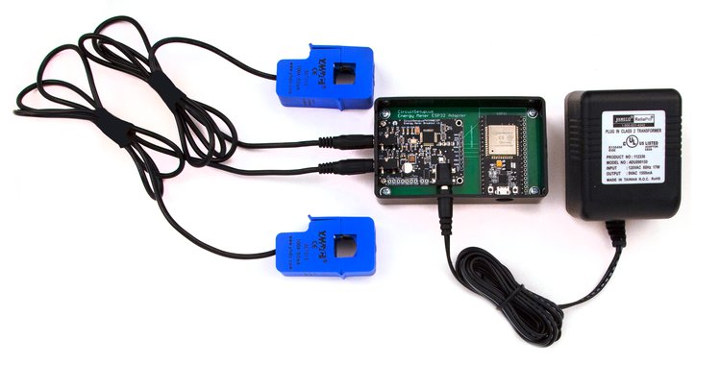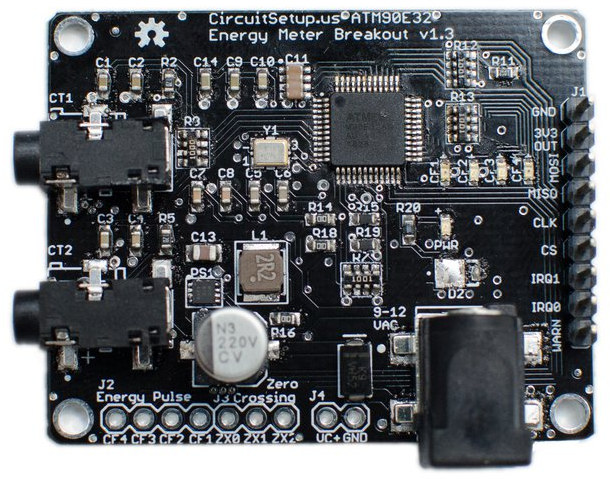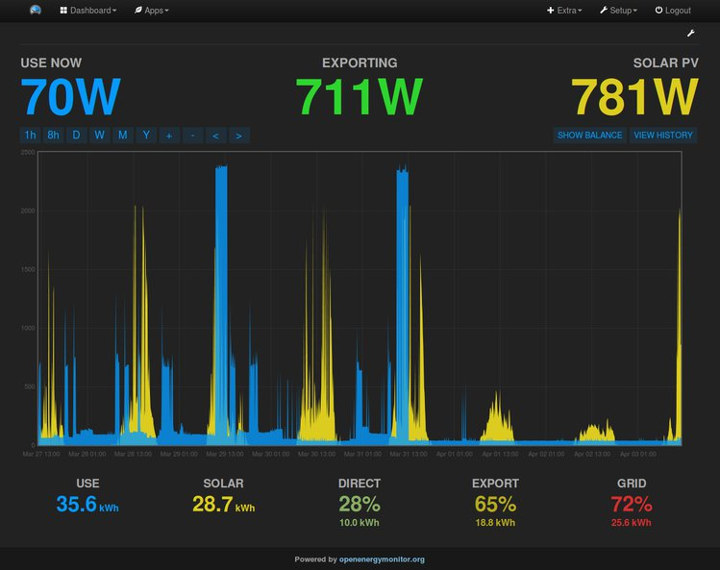It’s always useful to monitor the electricity consumption of your house, as you can easily and quickly find out whether an appliance is suddenly consuming a large amount of electricity before finding out from your next utility bill. It can also help remotely monitoring if an appliance has stopped working and fix it as soon as possible, for example an electric pipe heater making sure your pipe do not freeze in a holiday home.
In many cases, a qualified electrician needs to be involved for the installation of whole home energy meters both for safety and insurance matters. We’ve seen in the past energy meters fit easily into a circuit breaker box but they may not be suitable for all setups. I’ve previously reviewed an inexpensive digital clamp meter that you just need to clip on one of the wire connected to your home without having to mess with dangerous voltage and current, nor worrying about UL or TUV certifications. It would show the power consumption on its LCD display but without any way of getting the data it is not usable for data gathering and continuous monitoring.
 CircuitSetup’s Split single-phase energy meter works on the same principle but supports two clamps and the company coupled it with an ESP32 board to offer a complete wireless kit that can transmit energy data into a program like EmonCMS.
CircuitSetup’s Split single-phase energy meter works on the same principle but supports two clamps and the company coupled it with an ESP32 board to offer a complete wireless kit that can transmit energy data into a program like EmonCMS.
Split Energy Meter breakout board specifications:
- Energy Measurement IC – MicroChip ATM90E32 energy metering device
- Expansion I/O
- SPI Interface to connect to any Arduino compatible MCU
- Two IRQ interrupts, and one Warning output
- Energy pulse output (pulses correspond to four LEDs)
- Zero crossing output
- Real Time Data Sampling
- 2x current channels, 1x voltage channel (expandable to two voltage)
- Measurement Error – 0.1%
- Dynamic Range – 6000:1
- Gain Selection – Up to 4x
- Voltage Reference Drift Typical – 6 ppm/°C
- ADC Resolution – 16-bit
- Data calculated – Active power, reactive power, apparent power, power factor, frequency, temperature
- Power Supply – 9V DC via power barrel jack; built-in 500mA 3v3 buck converter to power MCU board
- Dimensions – 50 x 40 mm
 The board uses standard current transformer clamps to sample current, and the company has worked on making it work with EmonCMS open-source web-app for for processing, logging and visualizing energy, temperature and other environmental data and part of the OpenEnergyMonitor.org project. EmonCMS is also available as an Android or iOS app so you can visualize the data on your mobile device. Split energy meter is an open source hardware project with EAGLE schematics and PCB layout, as well as software, and ESP8266/ESP32 firmware released on Github. An Arduino sample also shows how to use MQTT or JSON to integrate the ESP32 energy meter with smarthome apps like Smartthings and HomeAssistant.
The board uses standard current transformer clamps to sample current, and the company has worked on making it work with EmonCMS open-source web-app for for processing, logging and visualizing energy, temperature and other environmental data and part of the OpenEnergyMonitor.org project. EmonCMS is also available as an Android or iOS app so you can visualize the data on your mobile device. Split energy meter is an open source hardware project with EAGLE schematics and PCB layout, as well as software, and ESP8266/ESP32 firmware released on Github. An Arduino sample also shows how to use MQTT or JSON to integrate the ESP32 energy meter with smarthome apps like Smartthings and HomeAssistant.

Split single-phase energy meter just launched on Crowd Supply with a $6,300 funding target. If you only need the energy meter breakout board a $29 pledge will suffice, but most people will likely go with the $59 energy monitoring kit that adds two YHDC SCT-016 120A CT Sensors, a pre-programmed ESP32 module, an ABS plastic box, the adapter board, and mounting screws. The power supply is not included, and can be added for $12 (120V, US only), or you may use your own. Owners of solar panel may also consider the $99 solar monitoring kit which just includes two “energy monitoring kits” for utility electricity consumption and solar panels electricity generation. Shipping is free to the US, and adds $10 to $15 to the rest of the world depending on the rewards. Backers can expect their board(s) or kit(s) to be shipped by mid July if everything goes according to plans.

Jean-Luc started CNX Software in 2010 as a part-time endeavor, before quitting his job as a software engineering manager, and starting to write daily news, and reviews full time later in 2011.
Support CNX Software! Donate via cryptocurrencies, become a Patron on Patreon, or purchase goods on Amazon or Aliexpress





Doesn’t it seem a little to expensive for what you get?
Considering products like Sense are $300, not at all.